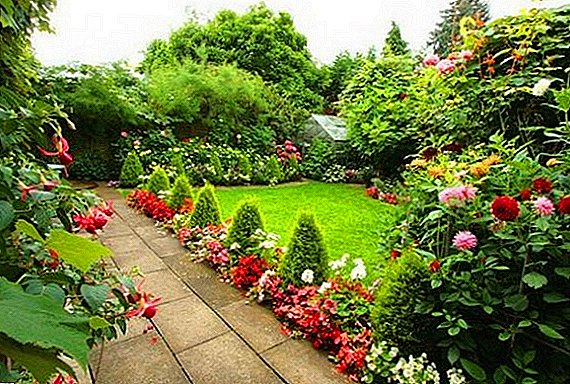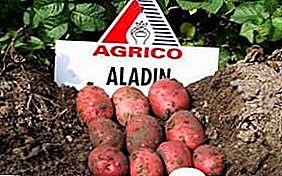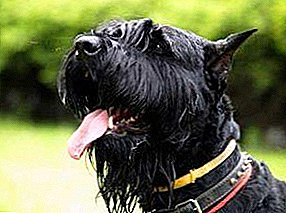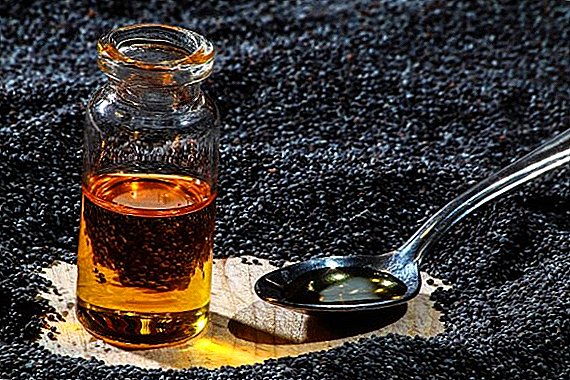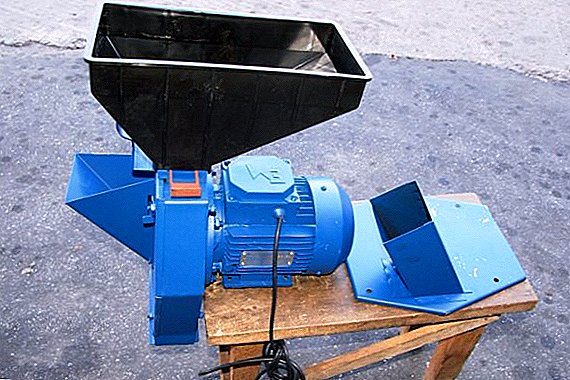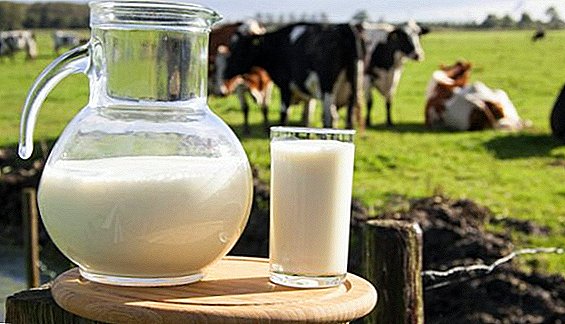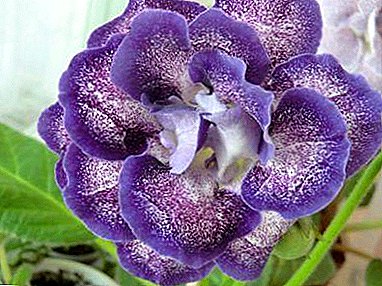
One of the most beautiful representatives of the flower world is Gloxinia Shagane. She attracts her attention with her bright and unusual colors.
This purple beauty is very fond of flower growers, who are not afraid of the difficulties of growing a whimsical flower. In the article you will learn about the features of this beautiful flower and about the rules of caring for it.
We will also tell about the methods of its reproduction, diseases and pests. Consider other plants like her. And you can watch a useful and interesting video on this one.
Botanical description and history
Shagane - terry gloxinia with large flowers-bells was bred by E. Slyusar. This is a violet-colored tigrin with corollas with a greenish neck decorated with a bright purple-blue border. Petals are painted white and covered with purple specks of various sizes and intensities. Read about other varieties of white terry gloxinia here.
Varieties
In nature, there are 25 species of gloxinia, but there are also hybrid species (the varieties of hybrid gloxinia and how to grow them, it is said here). For hybrid use only two types of Gloxinia Beautiful and Royal. Hybrid species depending on the size of the plant are:
- standard;
- compact;
- miniature;
- microminiature.
The most popular types are:
- Rosalind.
- Favorite.
- Tigrin mix.
- Gloxinia Impress.
- Gloxinia etyle de feu.
- Empress Tiger.
- Rua de Rouge
- Multibells
- Avanti.
- Tiger Blue.
- Hollywood.
- Charm.
- Cleopatra.
- Minx
- Shagan.
- Quadrille.
- Georgia and others.
Description of appearance and features
Shagane is a tuberous perennial with scaly rhizomes and erect stem. The leaves are located on each node cross-pair by two leaves. Rarely sheet plate has 3 parts. The stem and leaves are completely bare or velvety.
Flowers solitary blue or violet shade with four stamens. Flower shape - bell. Nectary ring or it is not at all.
Gloxinia has a large number of small seeds. A tubular corolla can be pink, purple, white or brown.
A photo
See further photos of this wonderful plant.



Where and how to plant?
For landing use:
- water;
- peat ground;
- potassium permanganate;
- tubers plants.
It should be especially attentive to the choice of tubers. They should not be shriveled and rotten.
Important: The bloom depends on the size of the tubers. The larger the tuber, the stronger the flowering. For the early emergence of sprouts, it is better to choose tubers with buds.
Prepare the soil before planting.. The roots of the plant are very thin, so they use loose earth for planting. The pot should not be deep and wide.
The best earth mixture consists of:
- peat land;
- sand;
- charcoal;
- dolomite flour.
You should also strictly follow the rules of landing:
- Prepare a solution of magnetsovka pinkish hue.
- Slightly warm it up and lower the plant tuber into it for 30 minutes.
- Take out the tuber and dry it.
- Planted to a depth of 1-2 cm on a par with the soil or deepened by half the height of the tuber.
Lighting and location
The plant loves light very much. Prefers not direct, but diffused light. You can not put the plant in direct sunlight, from this it can get burned from what the leaves begin to curl. From a lack of light, the plant loses its color, and when it is oversupplied, the growth and development of the flower slows down..
Best place for a western or eastern location. If you choose the southern location, then you need to create additional shading, and for the north - on the contrary create additional lighting.
Soil requirements
It is best to prepare the soil yourself. It must be drainage. The pot should be wide and lightly deep. Best of all ceramic or plastic.
How to care?
Gloxinia Shahane is a very demanding plant. Therefore, in home care you need to be very careful and strictly follow the rules of care.
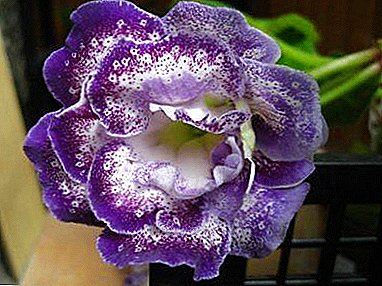 Lighting - bright but diffused light. The location is west or southwest. If necessary, create additional shading. To do this, you can close the windows with an automotive film that transmits light and slightly diffuses it. Avoid direct sunlight.
Lighting - bright but diffused light. The location is west or southwest. If necessary, create additional shading. To do this, you can close the windows with an automotive film that transmits light and slightly diffuses it. Avoid direct sunlight.- Watering - use only warm water. Need abundant watering only during flowering, watering is reduced during the rest period.
- Spraying - carried out several times a day. Use warm water.
- Ventilation - To avoid air stagnation, the room with the plant must be ventilated every day. Otherwise, air stagnation will lead to the occurrence of fungal plant diseases.
- Humidity - high humidity is necessary in spring. Do not allow water to stagnate, as dampness is detrimental to them. The optimum humidity is 70-80%.
- Top dressing - apply no more than twice a month and use complex fertilizers for indoor plants.
- Temperature - Avoid drafts and temperature drops. In summer, the required temperature is +20 ... +22 in the daytime, and at night - up to +18. In winter, from +10 to +14.
Diseases and pests
Like all indoor plants, gloxinia can become sick or be attacked by pests.
- Anthracnose. Symptoms - brown spots on the leaves, goes to the shoots and trunk. Can cause rotting and destruction of the plant. in the end, can lead to the death of the plant. For prophylaxis, spray it with oxyhom, cuproxate or copper oxychloride. In the initial stage, the infected parts of the plant are removed. With a strong infection, the plant dies.
- Ascohitosis. Manifested brown or red with brown rim spots on the leaves. When they are detected, it is urgent to remove and burn infected leaves. Treat the plant with copper sulphate or fungicides.
- Phyllosticosis. Dark spots are rounded with a brown heart. They occur due to high humidity. In case of phyllossticosis, it is urgent to dry the plant and treat with copper-based preparations.
- Septoria. There are spots of gray-brown hue. It looks like rust. For the treatment using drugs on the basis of copper and fungicides. It is necessary to process the plant twice with an interval of seven days.
- Photofluorosis. One of the most dangerous fungal diseases. Distributed through soil, rainwater and contaminated planting stock.
Symptoms:
- the appearance of brown spots;
- mold on the leaves;
- dry leaves in dry weather;
- annular hollows on the trunk.
Board: Cure the disease is impossible. Therefore, it is necessary to carry out prevention. To do this, carry out spraying fungicides.
- Gray rot. Manifested gray fluffy bloom on the stems. Because of him, the plant begins to rot quickly. Appears due to high humidity, lack of ventilation and close location of the plant. For prevention, provide moderate watering, provide ventilation, and air the room. For treatment, treat the plant with fungicides.
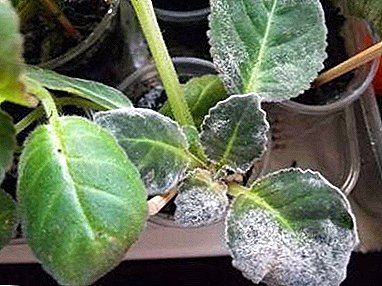 Mealy dew. Fungal disease, manifested by arachnid bloom of white color on the plant. It develops due to excessive watering, temperature difference, dampness. When infecting a plant at the initial stage, treatment with fungicides is necessary; at a later stage, the plant must be destroyed.
Mealy dew. Fungal disease, manifested by arachnid bloom of white color on the plant. It develops due to excessive watering, temperature difference, dampness. When infecting a plant at the initial stage, treatment with fungicides is necessary; at a later stage, the plant must be destroyed.- Downy mildew. It develops due to a sharp temperature drop, due to the use of rainwater. These are pale yellow, yellow brown or brown brown spots on the leaves. For treatment, the plant is treated with fungicides.
- Thrips. Insects feed on plant sap, which leads to its death.. Infection is manifested by bright dots, strokes and spots on the leaves. When found, the plant must be isolated from other flowers and treated with insecticides.
Breeding features
Propagated by:
- cuttings;
- seeds;
- division of the tuber.
In the reproduction of gloxinia Shagane in the home there is nothing difficult. Consider all the ways in detail.
Leaf
- Cut the sheet.
- Cut the stalk at a 45 degree angle.
- To dry, to cut the places of cuts to charcoal.
- Deepen the planting material in the soil or peat tablets 1 cm. Water.
- Put the containers with the plant into heat. Regular watering and airing.
- After 1.5 - 2 months, babies will appear.
- Young plants are seated in separate containers.
We recommend to watch the video on the breeding of Gloxinia leaf:
Cuttings
- Cut off the top of the stem with 2-4 sheets.
- Dip into the soil or peat tablet 1 cm. Plentifully pour.
- For rooting, the base of the peduncle should be treated with a root formation stimulator.
- Buds before planting must be removed.
We recommend to watch the video on Gloxinia reproduction by apical cuttings:
Seeds
The most laborious and time-consuming method of propagation of a flower - growing from seed. It consists in the following:
- Seeds are sown in a moistened mixture of peat and sand.
- Do not bury.
- Capacity placed in a greenhouse.
- Conduct a pick.
- When the seedlings reach 6-8 cm, they are seated in separate containers.
We recommend watching the video on the propagation of gloxinia using seeds:
Division of tubers
When new sprouts begin to appear, the tubers are divided into parts with a sharp, clean knife. On each of them should remain a point of growth. Sections are processed with crushed charcoal. Dried these parts and planted in the usual way.
We recommend to watch the video on breeding Gloxinia by dividing the tuber:
Similar plants
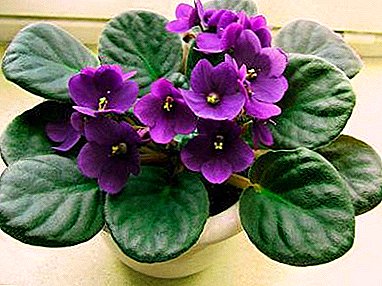 Violet - belong to the genus of plants of the Gesnerian family. However, in Gloxinia, the underground part of the plant is a tuber, and in violet, the usual root system. Gloxinia in winter enters a state of rest, violet is growing all year round.
Violet - belong to the genus of plants of the Gesnerian family. However, in Gloxinia, the underground part of the plant is a tuber, and in violet, the usual root system. Gloxinia in winter enters a state of rest, violet is growing all year round.- Hibiscus - have similar flowers in the form of bells or gramophone. Leaves like gloxinia can be with smooth edges or carved.
- Achimenez - Flowers look like Gloxinia. Petals of plants can be, as well as gloxinia, terry, with carved edges or simply rounded.
- Coleria - Flowers can be two-color in both plants. The edges of the petals can be smooth and openwork. Leaves velvet elongated.
- Streptokarpus - has a root system similar to gloxinia, it also has a variety of root roots. Flowers are also in the form of gramophone with smooth or delicate edges.
Conclusion
Gloxinia Shahane - fastidious, but very beautiful plant. With proper care, it will always delight its owner with the most beautiful flowering.


 Lighting - bright but diffused light. The location is west or southwest. If necessary, create additional shading. To do this, you can close the windows with an automotive film that transmits light and slightly diffuses it. Avoid direct sunlight.
Lighting - bright but diffused light. The location is west or southwest. If necessary, create additional shading. To do this, you can close the windows with an automotive film that transmits light and slightly diffuses it. Avoid direct sunlight. Mealy dew. Fungal disease, manifested by arachnid bloom of white color on the plant. It develops due to excessive watering, temperature difference, dampness. When infecting a plant at the initial stage, treatment with fungicides is necessary; at a later stage, the plant must be destroyed.
Mealy dew. Fungal disease, manifested by arachnid bloom of white color on the plant. It develops due to excessive watering, temperature difference, dampness. When infecting a plant at the initial stage, treatment with fungicides is necessary; at a later stage, the plant must be destroyed. Violet - belong to the genus of plants of the Gesnerian family. However, in Gloxinia, the underground part of the plant is a tuber, and in violet, the usual root system. Gloxinia in winter enters a state of rest, violet is growing all year round.
Violet - belong to the genus of plants of the Gesnerian family. However, in Gloxinia, the underground part of the plant is a tuber, and in violet, the usual root system. Gloxinia in winter enters a state of rest, violet is growing all year round.